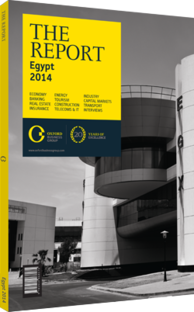OBG talks to Mark Duffelen, Regional General Manager, Xerox Middle East and Africa

Interview: Mark Duffelen
How challenging is it to establish viable innovation centres in emerging markets?
MARK DUFFELEN: The role of innovation in emerging markets is to develop solutions and services that are relevant to those markets and to contribute to wider growth. Having the infrastructure and capability to give clients in emerging markets access to critical resources – such as infrastructure and expertise across the entire value chain, including design, integration, testing and proof of concept – can make the difference in whether or not a start-up reaches its next milestone.
There are significant challenges in these markets as well. The culture, the economy and the prospects for growth are different in each market. Innovation centres do not just serve one country through one market; they serve a series of sectors, states and economies with unique challenges and differences. Increasing urbanisation, wealth and innovation is putting a strain on businesses as well. Growing populations and the speed of change are so demanding that we no longer have a down period. The key to innovation, regardless of where it is happening, is to focus on what challenges you have and what resources there are to tackle them.
Outside of research and development centres, what else can be done to stimulate innovation?
DUFFELEN: Innovation can happen in many different ways, not just in a designated centre. Innovation needs to be nurtured within an organisation, as well as among customers. Internally, it is important to nurture a culture where you allow employees to take risks. No progress is achieved without risks, and if every innovation was a success, we would be able to solve all of the world’s problems. An entrepreneurial approach can help to solve problems creatively.
The challenge in growth markets, and particularly in emerging markets, is that consumers are incredibly value conscious. They want to pay the minimum possible and get the maximum value from a product or service. In this model, the margins may not look the same in dollars, but one must consider volume, which is at an almost unseen level in developed markets. In order for companies to ensure their alignment with these needs, they must engage with customers as partners in the innovation process by bringing about practical innovations that solve the consumer’s needs.
What are the challenges to improving ICT usage in the public sector and among small and medium-sized enterprises (SMEs)?
DUFFELEN: Egypt is well ahead of other markets in the region in terms of technology adoption by the government. And, with the focus on positioning the country as a technology centre for the Middle East and Africa, that trend will continue. Nevertheless, the challenges are the same as in most markets: controlling costs, improving productivity, increasing mobility and enhancing efficiency. Companies across the spectrum, in both the public and private sector, are all seeking more value-added services and technology to strengthen their competitive advantage. This opens many windows of opportunity in both the public sector and for SMEs.
What measures can be taken to enhance the competitiveness of human resources?
DUFFELEN: This is an important goal for businesses, the public sector and employees. There is a need to nurture future leaders who are dynamic, creative, proactive, anticipative and sharp. Finding the right people with the right skills is vital, and so too is retaining quality people. Companies must offer real career opportunities in order to keep employees engaged. They must show them that they can grow within an expanding, exciting company. Attracting the right employees, and retaining and developing them, should be the primary foci in the sector. This could be done in different ways, such as sponsoring training for new employees, matching new graduates with job opportunities, using development programmes for employees and recognising employees’ major contributions, among other things.
You have reached the limit of premium articles you can view for free.
Choose from the options below to purchase print or digital editions of our Reports. You can also purchase a website subscription giving you unlimited access to all of our Reports online for 12 months.
If you have already purchased this Report or have a website subscription, please login to continue.

